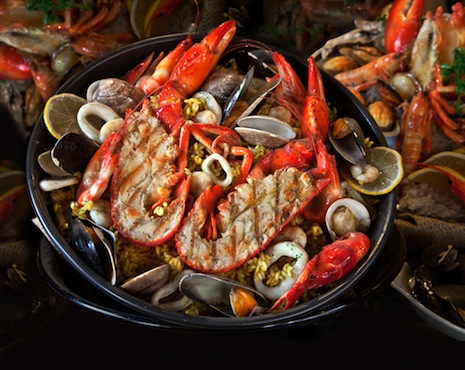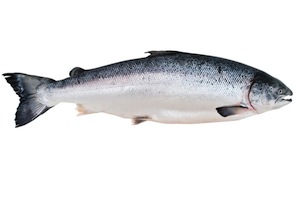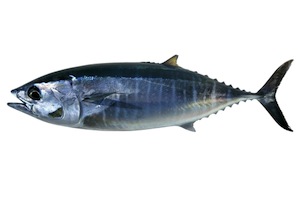
I am that guy.
You know the one. When the waiter comes to the table to give the specials, I’m the one who needs to know where the snapper’s from, how the swordfish was caught, and whether the salmon is farm-raised. My brother generally starts apologizing for me as soon as I open my mouth to see if the Chilean seabass is from the Marion Islands or the McDonald Islands. The answer better be the McDonalds or I lose my shit.
I am aware that there are lots of things on the menu. And that if we freaked out over every food injustice we’d quickly become this classic Portlandia sketch:
But here’s the thing, sustainable fish is not like organic veggies or free-range chicken. In fact, if you only follow one food issue, forget GMOs, hormones in beef, or (please, God) biodynamic wine. Become a fish nerd. As I detail in a story for the upcoming issue of Harpers Magazine the oceans are in freefall. We are literally squeezing them dry. Except, you know, not literally dry I suppose.

Fish are the last wild creatures that we eat (no, that mooseburger you ate was not from a wild moose). And as global demand for fish has doubled in the past 20 years, the prices have remain stagnant. How is that possible, you ask? We catch a buttload more of them now, that’s how. Many populations have tanked below 20 or 10 percent as we just move onto the next species. And worst of all is how many we catch, kill, and chuck overboard because it’s the wrong thing. Up to 90 percent in many cases.
And unlike beef or chicken, most of that fish we buy at a restaurant rather than the market, meaning we are even more unconnected to it. Which leads to the next logical question, “What can I do?” The answer is, a lot. Fish may be the most damaging food you can eat, but it’s also the one where the consumer has the most direct power to affect change. So rather than simply saying, “Don’t eat seafood anymore,” I’ve created a guide, arranged in order of pains in the ass (easiest stuff at the beginning, biggest pains in the ass at the end, in case you drop out early). I give you the Erik Vance Restaurant Guide to Saving the Oceans.
- Send a message to the chef – Your average chef could give hot bowl of sea lion turds about where his/her seafood comes from. And most think you feel the same way. Many tell me that they would happily look into sustainable options if they thought their diners cared. It’s hard work and they’re not going to do it just to be nice. Statistics suggest that more than half of us do. So if you’re not sure if something’s sustainable and you want to eat it anyway, tell the waiter to tell the chef (or manager – whoever orders the fish) that sustainable options are important to you. That you will eat the halibut-of-dubious-origins this time, but that you expect an effort to find clean versions next time. If everyone did that alone, it might save our oceans.
- Sushi – Don’t eat it. There are, like, six truly sustainable sushi restaurants in the country and their owners are driving themselves insane. Sorry, but just don’t eat it.
- Talk to your waiter – Ask if the fish is sustainable. If the waiter doesn’t know, then it’s not. If he comes back and says it is, he’s probably fibbing (this happens A LOT). If a restaurant is going to the trouble of sourcing their fish right, they will tell their waitstaff before the night starts. Unless your waiter is new or not terribly bright.
- Don’t trust the waiter – Even if the waiter says a fish is sustainable, it may not be. After all, there is a premium for selling sustainable and it’s not clear that laws are being broken if you fib a little. These fibs can come from either the restaurant or the distributor, trying to appease a chef who cares about the oceans. A few years back I fact checked the menu of a restaurant in San Francisco, called Waterbar, that claimed to have sustainable fish and charged high prices for them. When I called the distributors and talked to the staff, more than half of the menu was either unverifiable or patently false (I encourage any local journos to take a look at them and see if they’ve improved – might be a story in it).

Bluefin tuna are so rare these days that single fish can pay and angler for a whole season of fishing - Check the species – What kind of fish is it? Obviously, if you are eating orange roughy or blue fin tuna, it doesn’t matter how the thing was caught, it’s from a decimated population. For this, there is no better guide than the Monterey Aquarium’s Seafood Watch guide. They have a cool smartphone ap and little paper pocket guides, organized by region. If a fish is on the green list, eat away; if it’s yellow, only on special occasions; and if it’s red, don’t order the stupid thing.
- Start at the bottom – If you do recognize the fish ask your self, “Is this from the top or the bottom of the food chain?” Tuna, shark, and swordfish are all slow growing and likely to disappear faster (also loaded with mercury). Things like halibut, sardine, crab or trout are closer to the bottom and tend to be better.
- Check the gear – “Gear” in fishing parlance is how the fish was caught. Bottom trawlers, for example are basically bulldozers that rumble up and down the ocean floor, wreaking havoc. Long liners leave hooks that sit out for days and catch everything and its mother. Acceptable terms are troll caught (not to be confused with “trawl” caught), rod and reel, Scottish seine, trap-caught, or pole caught. “Hook and line” is sort of a mixed bag that could either be a sustainable fishing rod or an unsustainable longline.
- Check the season – If you are still reading, you are probably already a fish nerd. Yes, fish, like crops, have seasons. If you are eating something that claims to be fresh and it’s out of season, well, either it’s caught in a very nasty way for the ocean or its not fresh. Sadly, most seasons are from late spring to early fall (mmm, except for the wonderful California crab season)
- Fins and farming – If it has fins, it shouldn’t be farmed. That’s a rough guide, but salmon and other farmed fish are heavy polluters and eat a lot of fishmeal (ie: other ground-up fish from the ocean as shown in this hilariously-titled movie). If it has a shell and is farmed, like oysters or (rarely) scallops, it’s great to eat. If it’s farmed shrimp … well, ah, that’s complicated.

Trout are undervalued, often-badly-cooked fish that we should take another look at. Potentially very sustainable. - Mix it up – This one is actually pretty easy, but it hurts a lot more. About 60 percent of the fish we eat in the US is either shrimp, salmon, or tuna. Even if we hunted them right, no species can withstand being America’s favorite fish. Just avoiding the top three and broadening your horizons is a help. Try the rockfish, it’s good.
In all of this, remember that the term “sustainable” is not a legal term. It’s not like “organic,” “grade A,” or “registered sex offender,” which have specific legal definitions. Laws requiring accurate menus punish lying about what kind of fish it is, not lying about whether it’s good for the planet. If I want to say it’s sustainable because I urinated on it while calling it nasty names, well, I’m not breaking any laws. Except, I suppose, one or two health codes.
But after I published a seafood story a few years back, I got a call from NOAA’s enforcement wing trying to figure out how they might begin enforcing sustainability. It’s still a ways off, but the more demand we create the faster industry will adapt. And we’re not talking about a lot, here. The industry completely freaked out and went through a revolution when it realized that 10-15 percent of us wanted to buy sustainable fish. If we hit 30, God knows what we might accomplish.
Photo Credit: Shutterstock
Where exactly does “a buttload” rank on the size index, Erik?
Teasing.
But seriously, no sushi? You’re breaking my heart.
And actually, the last one is the easiest. “Try things that aren’t shrimp, salmon, or tuna.” Now that, I can do.
I always feel bad about rockfish because they have such long lifespans. Populations like that don’t recover easily.
Rockfish is actually a mixed bag. In California, where I grew up, there are lots of sustainable options. But as you can see in this handy chart, about halfway down, it’s not always a good bet. http://www.montereybayaquarium.org/cr/cr_seafoodwatch/sfw_alternatives.aspx
And buttload is between a pile and a whole crapload. Sorry about the sushi but feel free to argue if you think I’m wrong.
Good post, nice list of tips for people eating out navigating the fish menu. As a fellow fish nerd, thank you for sharing! Just FYI for the Canadian readers & those eating in Canadian restaurants, the Seachoice program is very helpful: http://www.seachoice.org/. It’s similar to the US Monterey Aquarium Seafood Watch guide, but specific to Canadian contexts.
While the politics of individual consumer choice is in many ways the most unifying politics in the U.S. today, I am not convinced that it is powerful enough to save wild fish populations.
And that is because the U.S. isn’t alone on the planet and relatively speaking it isn’t the largest catcher and eater of fish. Politically picky middle class American eaters simply can’t do enough. One needs national and international regulations, and – probably – a real research push to make fish farming more ecologically balanced.
And finally, there is in these kinds of arguments also a presumption that the hyper abundant, North American agricultural system applies worldwide. It doesn’t. In many places people eat fish because that’s all there is to readily eat.
Erik Vance, this is awesome and you are awesome. Loved this read.
Steven brings up a great point that I didn’t have time to address. Cold, northern waters have low biodiversity and high volume. The tropics have lots of different stuff but small numbers. Ergo, it’s easier to eat all the red snapper than all the Atlantic cod. Somehow we manage to do both.
But I disagree there’s nothing we can do. Fishing is highly competitive and companies are sensitive to public mood. Even a 5% bump in demand for better fish can rock the industry.